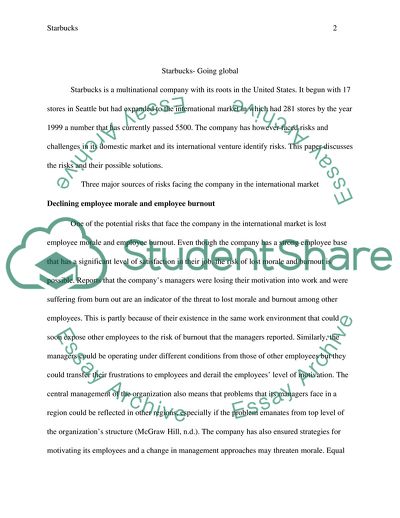Starbucks - going global fast Case Study Example | Topics and Well Written Essays - 1000 words. https://studentshare.org/marketing/1812890-starbucks-going-global-fast
Starbucks - Going Global Fast Case Study Example | Topics and Well Written Essays - 1000 Words. https://studentshare.org/marketing/1812890-starbucks-going-global-fast.


